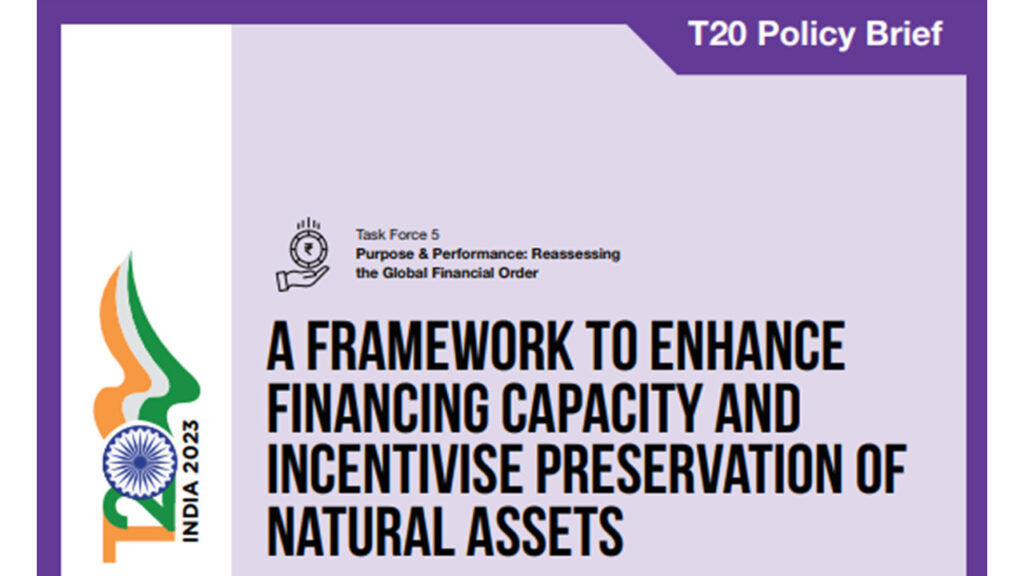INDEX
The concepts of human capital and natural capital have been rapidly gaining ground in recent years. This is a movement to regard human resources and the environment as "capital" that can be used to fund corporate activities, rather than as costs or resources as previously thought, and to disclose them to the market as investment targets.
This article will review disclosure regulations and guidelines in Japan and abroad regarding these developments in non-financial capital, and introduce the concept of "impact-weighted accounting" in which such non-financial capital is converted into money and reflected in the financial statements.
Importance of non-financial capital
Unlike the days when manufacturing was the main source of profit by producing goods, the focus of industry has shifted to the service industry, and social interests and investment values have become more diverse. In order to improve corporate value based on sustainability under changing circumstances, it is necessary to view excellent human resources and environmental improvements as "capital" and actively make them investment targets.
One example of the importance of non-financial capital is human resource development. In Europe and the U.S., where human resources are fluid, it is essential for employees to learn and grow after they start working, while Japanese companies have not invested sufficiently in human resources for a long time. Figure 1 compares the ratio of human capital investment to GDP in each country.
Figure 1: International comparison of human resource investments (other than OJT) (% of GDP) (Source:METI)
This shows that Japan's human resource investment ratio is notably lower than in Europe and the United States.
In addition, a comparison of PBR (price book value ratio), which is a value indicating the market capitalization of a company relative to its net assets, by industry in Japan, the U.S., and Europe shows that Japanese companies have the lowest average PBR in all industries (as of March 2022) [1]. Companies with P/B ratios below 1 are considered to have non-financial capital other than financial net assets that are negatively valued in the market (Figure 2).
Figure 2: Average P/B ratios by industry for Japan, the U.S., and Europe (Source:METI)
These data may be attributed to the relatively low level of interest in human capital and other areas among Japanese companies, as well as to the fact that efforts being made within companies are not being disclosed in an appropriate manner.
Elements of human and natural capital
When we speak of human capital and natural capital, the definitions of those terms vary from company to company and organization to organization, and there is a wide range in the scope of what can be assumed. Here, we quote from the International Integrated Reporting Framework[2] published by the International Integrated Reporting Council (IIRC).
◾️ Human capital: people's ability, experience and willingness to innovate, e.g,
Alignment with and support for organizational governance frameworks, risk management approaches, and ethical values
Ability to understand, develop and implement the organization's strategy
The royalties and willingness to improve processes, products and services,
Includes the ability to lead, manage, and collaborate.
◾️ Natural Capital: all renewable and non-renewable environmental resources and processes that provide goods and services that are fundamental to the past, present, and future success of an organization. Natural capital includes
Air, water, land, minerals and forests
Biodiversity and ecosystem health
(Source:International Integrated Reporting Framework Japanese Translation)
In addition, regarding human capital, the "Guidelines for Human Capital Visualization[3]" released by the Cabinet Secretariat's Study Group on Visualization of Non-Financial Information in 2022 provides examples of disclosure items as shown in the table below.
Table 1: Human capital disclosure items (Source: Cabinet Secretariat "Human Capital Visualization GuidelinesPrepared by the author from)
| field | Examples of disclosure items |
| Human Resource Development | Leadership development skills/experience |
| engagement | engagement |
| liquidity | Recruitment and Retention Succession |
| diversity | Diversity Non-Discriminatory Parental Leave |
| Health & Safety | Mental Health Physical Health Safety |
| labor practice | Labor Practices Child Labor/Fairness of Forced Labor Wages Relationship with Benefits Unions |
| Compliance/Ethics | Compliance/Ethics |
While all of these definitions are necessary information to measure the value of a company from a perspective that includes sustainability, there are many matters that are difficult to quantify using existing methods or to assume a return in the form of capital. In the following sections, we will look at regulations and trends in the actual measurement and disclosure of these non-financial capital items.
Human capital-related regulations
The EU has been ahead of Europe and the U.S. in human capital disclosure and its mandates, with the NFRD (Non-Financial Reporting Directive) requiring companies with 500 or more employees to disclose information including "society and employees" since 2014, The scope of application will be expanded by the CSRD (Corporate Sustainability Reporting Directive) starting in fiscal 2024[4].
You can read more about the scope and timing of the CSRD in the following articles
CSRD: The EU Sustainability Reporting Standard Just Before It Enters into Force - The Impact on Japanese Companies - | aiESG
In the U.S., disclosure of human capital-related information became mandatory for all listed companies in November 2020. In addition, in 2021, the "Human Capital Investment Disclosure Act" was proposed to require disclosure of eight human capital items. The bill was not voted on that year, but was reintroduced in September 2023[5][6].
In Japan, the Cabinet Office Ordinance on Disclosure of Corporate Information, etc.[7] promulgated and enforced on January 31, 2023, mandates the disclosure of strategies and targets regarding human capital. Specifically, companies are required to describe their human capital development policy and internal environment development policy in their annual securities reports, and to indicate measurable index targets and progress[8].
Table 2 : Movements toward mandatory human capital disclosure in Japan and abroad
(Source: Ministry of Economy, Trade and Industry, "Secretariat's explanatory materialsPrepared by the author based on "The World's Most Popular Cities.")
| Europe | |
| 2014 | Mandatory disclosure (NFRD), including "Society and Employees" |
| 2019 | ISO consolidates indicators for human capital management (ISO 30414) |
| Year 2021 | NFRD Revision Proposal Announced |
| Year 2024 | Start of CSRD application |
| United States of America | |
| Year 2020 | Mandatory disclosure of information on human capital (Revised Regulation S-K) |
| Year 2021 | The House of Representatives passed the "Human Capital Investment Disclosure Act." |
| Year 2023 | Reintroduction of the above bill |
| Japan | |
| Year 2023 | Cabinet Office Ordinance on Disclosure of Corporate Information, etc. promulgated and enforced. |
Regulations and guidelines related to natural capital
Regulations and guidelines have been established for the disclosure of information on natural capital from multiple perspectives, including resource use and biodiversity.
The Taskforce on Nature-related Financial Disclosures (TNFD) is a particularly noteworthy international initiative, which is described in the following article.
Explanation] What is TNFD? A New Bridge between Finance and the Natural Environment | aiESG
The Natural Capital Protocol[9], developed in 2016 by the Natural Capital Coalition to include natural capital in corporate decision-making, and the TNFD, a guideline for disclosure purposes, as well as a framework for companies to set their goals in response to the TNFD. SBTs for Nature, which was developed as a framework (SBTN Blog 2/19 First Draft - Google Docs) and other references.
As for mandatory disclosure of information, in Europe, as in the case of human capital, the ESRS and CSRD are obligatory. In 2022, Business for Nature, an international organization dedicated to restoring the destruction of nature, announced a request to governments to require companies to disclose information on their natural capital, and more than 400 companies worldwide have signed [10].
In Japan, disclosure of information based on the Taskforce on Climate-related Financial Disclosures (TCFD) is practically mandatory for companies listed on the Tokyo Stock Exchange Prime from FY2022 onward. This trend of mandatory disclosure is not limited to climate change, but is likely to expand to natural capital as a whole.
Impact-Weighted Accounting and the New National Wealth Index
We have described some of the major disclosure systems that many countries and companies are currently working on. However, these regulations and guidelines merely indicate the current efforts of each company, and it is largely up to the investor to read them and make a concrete judgment as to how this translates into capital that will lead to the value of the company. This is why the concept of "impact-weighted accounts (IWA)," which translates a company's impact on the environment and society into monetary units, has begun to attract attention in recent years.
Impact-weighted accounting is being developed by Harvard Business School and others, and is intended to reflect human capital and natural capital in corporate income statements and balance sheets by measuring and converting them into monetary values[11]. The Impact-weighted accounts framework (IWAF) published by the Impact Economy Foundation of the Netherlands in 2022 discloses the process of introducing impact-weighted accounting and some of the coefficients used in value conversion [12 12].
Figure 3: Impact-weighted accounts procedure (Source: Impact-weighted accounts framework)
This indicator is groundbreaking in that it makes it possible to capture previously "non-financial" items such as the natural environment and human capital on a continuous basis with financial information. However, there are some points that should be kept in mind, such as the possibility that the valuation may be highly dependent on the choice of methodology [13].
The Inclusive Wealth Index (IWI), which determines regional wealth, is another attempt to incorporate non-financial information into existing indicators. The IWI, presented at the UN Conference on Sustainable Development (Rio+20) in 2012, expresses the wealth of a country or region instead of GDP by including the value of all man-made capital (roads, buildings, machinery), human resources (education, health), and natural capital (land, fisheries, climate, mineral resources) (Figure 4).
Figure 4: Capital Comprising IWI
(Source:Inclusive Wealth Report 2023: Measuring Sustainability and Equity)
The IWI is described in detail in the following article.
Commentary] IWI (Inclusive Wealth Index) - A New Index to Measure Well-Being
With increasing attention to human capital and natural capital, it is expected that companies will be required to disclose information using more objective indicators, rather than just explaining governance and introducing corporate initiatives. aiESG enables companies to approach ESG from various perspectives, including ESG analysis tracing back to the end of the supply chain, analysis based on IWI, and utilization of natural and human capital for management. The aiESG enables companies to approach ESG from a variety of perspectives.
Conclusion
In this article, we have focused on non-financial capital, particularly human capital and natural capital, which have become increasingly important in recent years. The focus should not only be on obtaining scores, but also on the "capital" of the company.
aiESG provides support for everything from basic human capital and natural capital to actual analysis and disclosure, so please contact us if you have any questions about ESG compliance.
Contact us:
https://aiesg.co.jp/contact/
Bibliography
[1] Ministry of Economy, Trade and Industry, 2022
[2] International Integrated Reporting Framework Japanese Translation
[3] Study Group for Visualization of Non-Financial Information, Cabinet Secretariat, "Non-Financial Information Visualization Study GroupHuman Capital Visualization Guidelines"
[4] Ministry of Economy, Trade and Industry, "Survey on Human Capital Management"
[5] Text - S.1815 - 117th Congress (2021-2022): Workforce Investment Disclosure Act of 2021 | congress.gov | Library of Congress
[6] Actions - S.2751 - 118th Congress (2023-2024): Workforce Investment Disclosure Act of 2023 | Congress.gov | Library of Congress
[7] Cabinet Office Ordinance Partially Amending the Cabinet Office Ordinance on Disclosure of Corporate Information, etc.
[8] FSA "Explanation of the Amendment to the Cabinet Office Ordinance on Disclosure of Corporate Information, etc."
[9] Natural Capital Coalition "Natural Capital CoalitionNPP"
[10] Make it mandatory - EN - Business For Nature
[11] Impact-Weighted-Accounts-Report-2019_preview.pdf (hbs.edu)
[12] The Impact-Weighted Accounts Framework - Impact Economy Foundation
[13] Financial Research Center, FSA "Current Status and Prospects of Impact-Weighted Accounting"
Related page
Report List : Regulations/Standards
https://aiesg.co.jp/topics/report/tag/基準-規制/
Commentary] IWI (Inclusive Wealth Index) - A New Index to Measure Well-Being
https://aiesg.co.jp/topics/report/240221_iwi/
CSRD: The EU Sustainability Reporting Standard Just Before It Enters into Force: The Impact on Japanese Companies
https://aiesg.co.jp/topics/report/2301120_csrd/
Explanation] What is TNFD? A new bridge between finance and the natural environment
https://aiesg.co.jp/topics/report/230913_tnfdreport/
[Explanation] TNFD early adopters and their characteristics
https://aiesg.co.jp/topics/report/240314_tnfd-early-adaptor/
Commentary] Nature Positive : Realizing a Society that Can Live in Harmony with Nature - About OECM and Sites for Coexistence with Nature
https://aiesg.co.jp/topics/report/240214_nature-positive/














